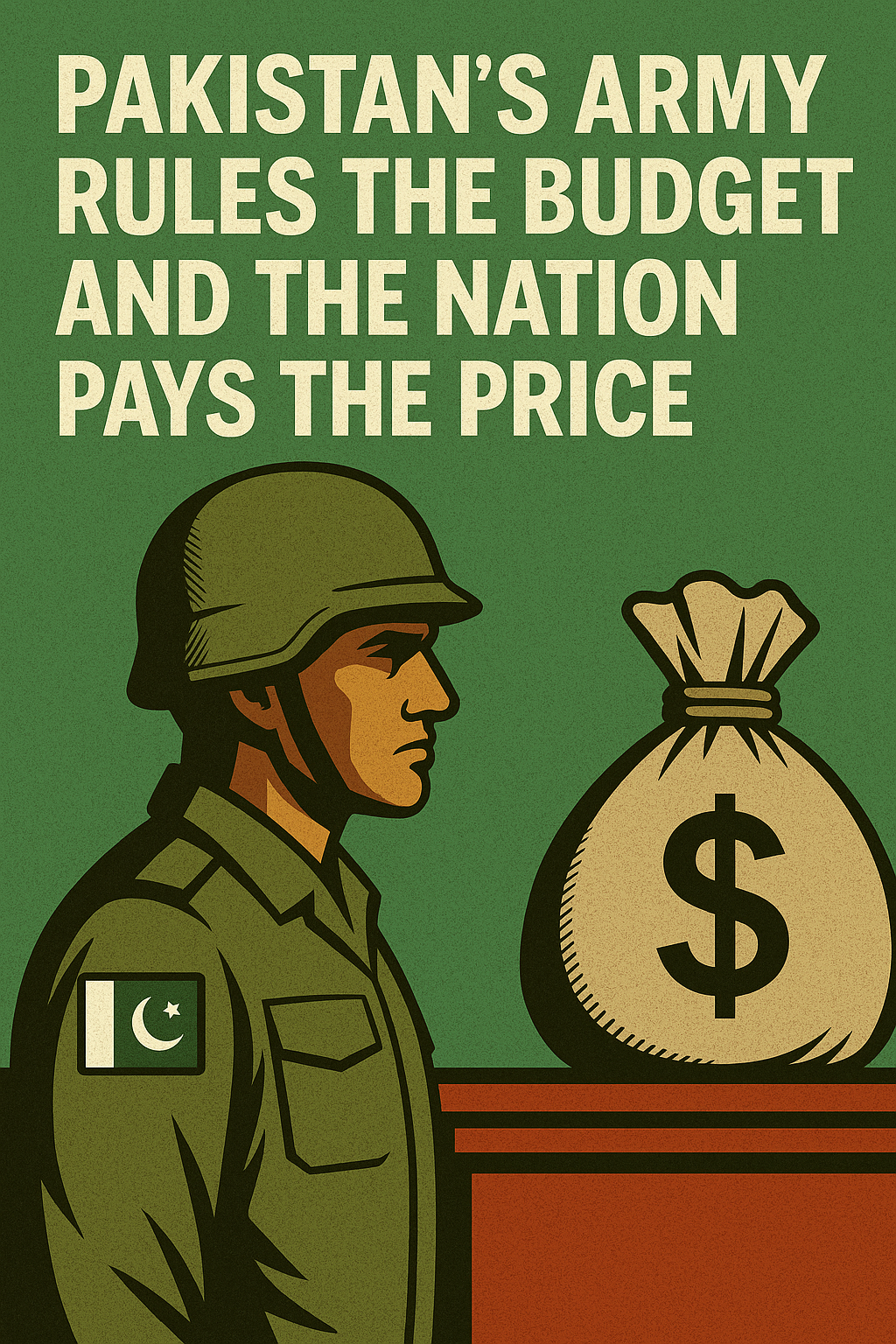
In any democracy, the military is meant to serve the nation—not steer its financial priorities. Yet, in Pakistan, the military’s stranglehold over the state’s economy has grown so tight that it now determines the very pulse of the country’s fiscal strategy. As the 2025-26 federal budget shows, Pakistan is no longer just a state with an army—it is an army with a state.
A Budget for Barracks, Not Classrooms
The most glaring indicator of military dominance is this year’s defense budget. The Pakistan government has earmarked a staggering 2.55 trillion Pakistani rupees (over $9 billion) for military expenditure—representing a 20.2% jump from last year and the highest increase in over a decade. This defense outlay consumes 1.97% of the nation’s GDP and dwarfs the meager spending on health and education, which has dropped below 1% of GDP.
Meanwhile, the federal development budget—critical for infrastructure, education, and social upliftment—has been slashed by half to just $3.54 billion. In real terms, this means fewer hospitals, underfunded schools, and stagnant economic growth—all sacrificed at the altar of military ambition.
IMF Funds, Diverted Ambitions
International financial institutions like the International Monetary Fund (IMF) and Asian Development Bank (ADB) have recently stepped in to rescue Pakistan’s crumbling economy, providing billions in loans. However, these funds—intended to stabilize the economy and promote development—are increasingly being diverted to service defense needs.
India has already flagged concerns about this misuse of international aid. Islamabad’s opaque military budget practices, which hide true defense costs, only amplify these worries. Foreign donors are now being urged to monitor how their funds are used, fearing they are fueling an army rather than feeding a nation.
Militarization Over Modernization
Pakistan's economic challenges are grave: a poverty rate exceeding 45%, foreign reserves under $10 billion, and a ballooning external debt nearing $130 billion. Yet, instead of directing scarce resources toward reform and productivity, the government—under heavy influence from Rawalpindi—channels them into militarization.
Officials justify the rising defense expenditure by citing tensions with India and internal insurgencies, particularly in Balochistan and Khyber Pakhtunkhwa. However, this narrative hides a more disturbing truth: the military’s primary interest is not security, but supremacy. Development budgets are being gutted to protect the military’s institutional empire—an empire that includes real estate holdings, private businesses, and shadowy control over foreign policy.
Civilian Authority Hollowed Out
The erosion of civilian oversight is not new. But it has become far more brazen in recent years. Following the arrest of Imran Khan in 2023, riots erupted, and the military cracked down harshly, dismissing several generals and court-martialing others, including former ISI chief Faiz Hameed. General Asim Munir’s consolidation of power since then reflects a deepening trend: the army no longer acts behind the scenes; it openly dictates political outcomes.
This domination extends to how national resources are allocated. Two major infrastructure projects—one in Pakistan-occupied Kashmir, the other in Balochistan—escaped budget cuts despite broader fiscal tightening. Their exemption reflects strategic military interests, not civilian needs.
A Vicious Cycle of Dependency
This cycle of excessive defense spending and economic mismanagement is self-reinforcing. As Pakistan borrows more from global institutions and friendly nations, it tightens its dependence on military aid and strategic leverage, particularly from countries like China. This creates a perverse incentive: instead of reforming economically, Pakistan positions itself as a strategic pawn in global geopolitics to attract lifelines—further delaying real development.
A Dangerous Doctrine
General Munir’s recent remarks—reviving Pakistan’s two-nation theory and pushing for the full integration of Balochistan—signal the military’s enduring ideological rigidity. Such dogmas have long justified bloated defense budgets and internal crackdowns. But these doctrines now threaten the very cohesion of the state, as seen in Pakistan’s strained ties with both Afghanistan and Iran.
From Rawalpindi’s command rooms to the dusty streets of Gwadar, the price of military supremacy is being paid in economic stagnation, developmental neglect, and rising public discontent.
A State in Uniform
Pakistan today stands at a crossroads. One path leads toward democratic consolidation, civilian supremacy, and economic reform. The other—on which it currently marches—leads deeper into militarization, dependence, and eventual implosion.
If Islamabad continues to treat its army as a substitute for its institutions, it will soon find itself without either. And the nation’s dreams of prosperity will remain trapped behind military checkpoints, never to cross the border of possibility.


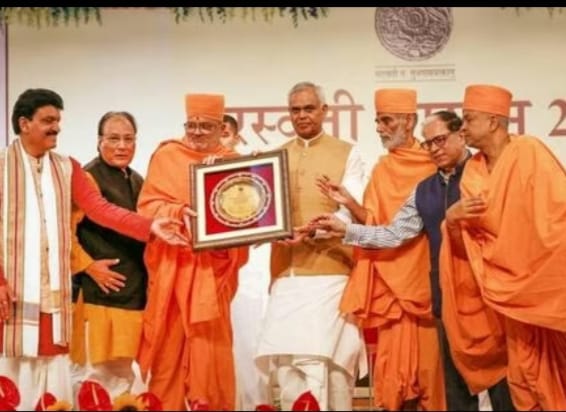
.jpeg)


.jpeg)


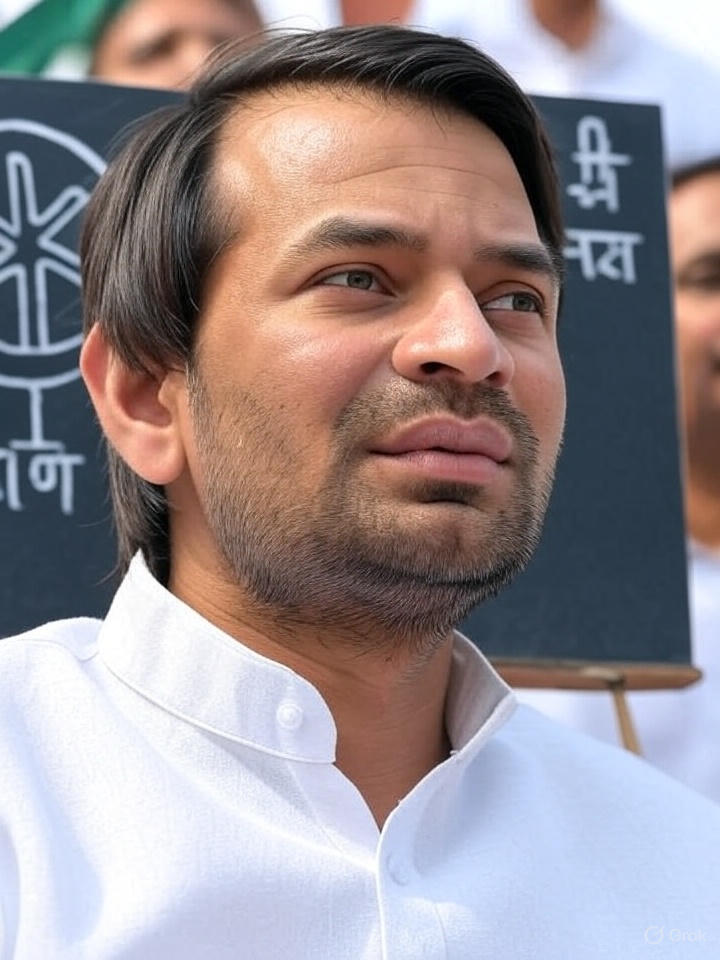
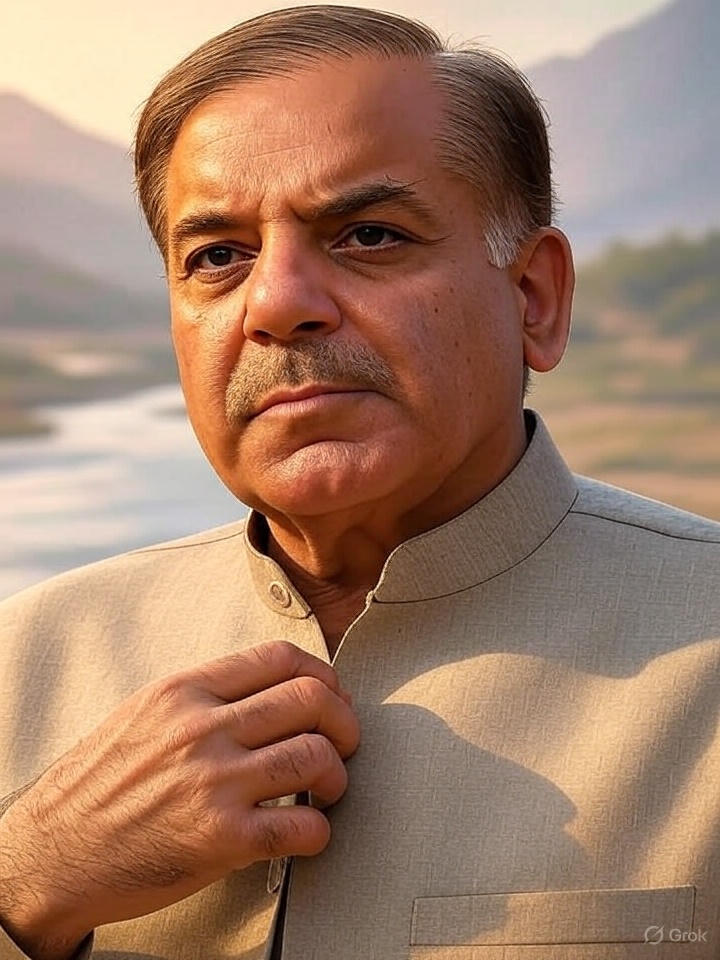
.jpeg)
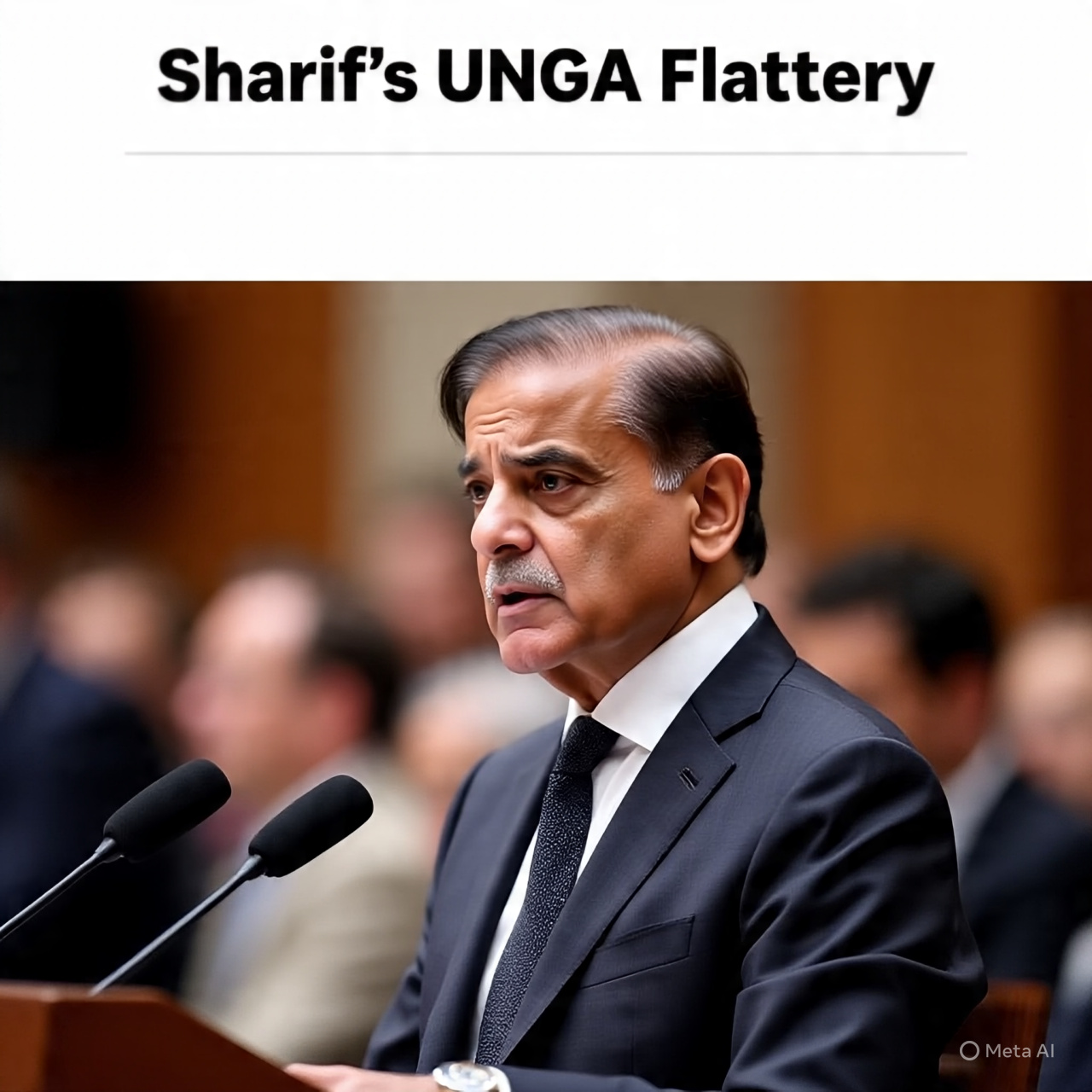
.jpeg)
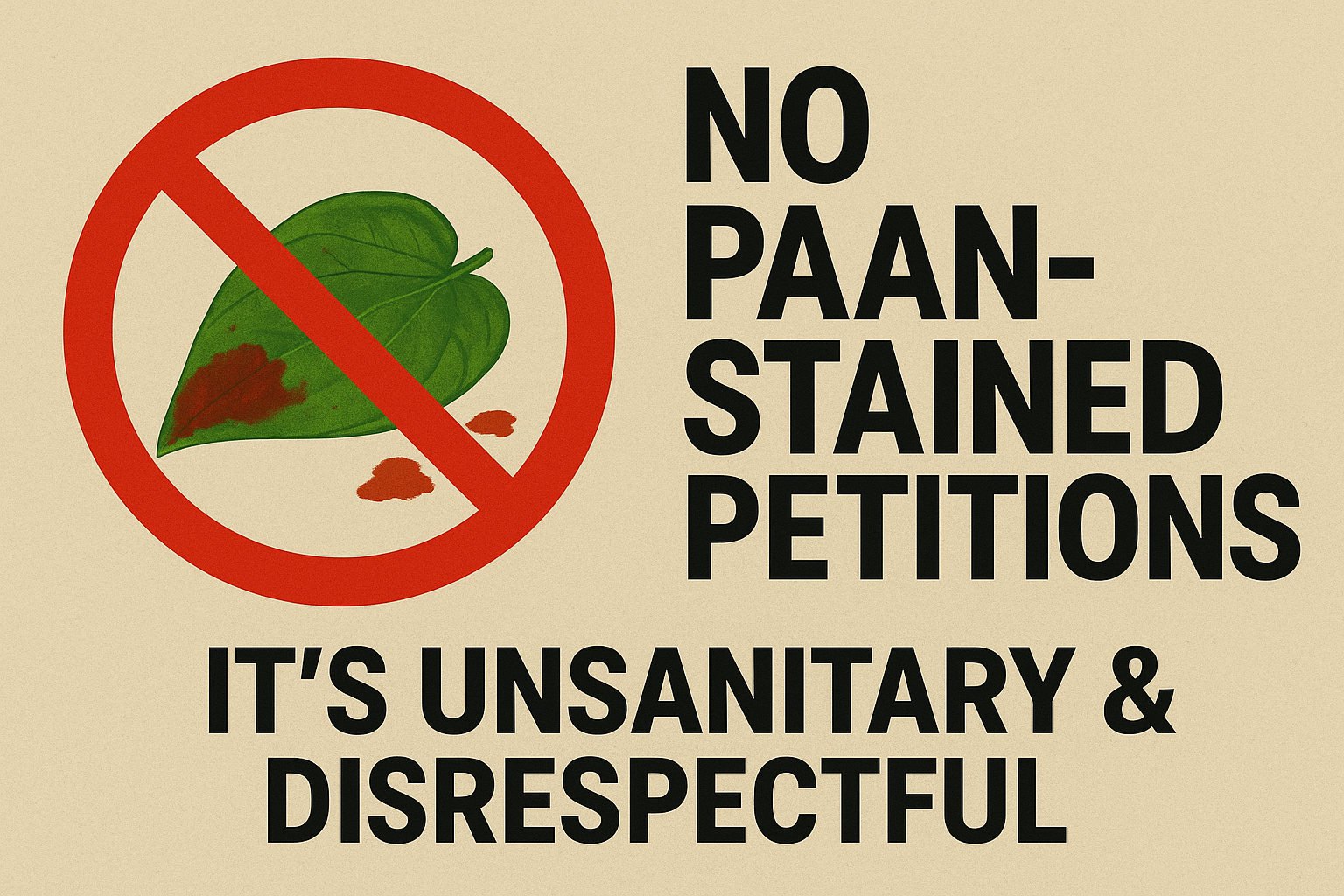

.jpeg)

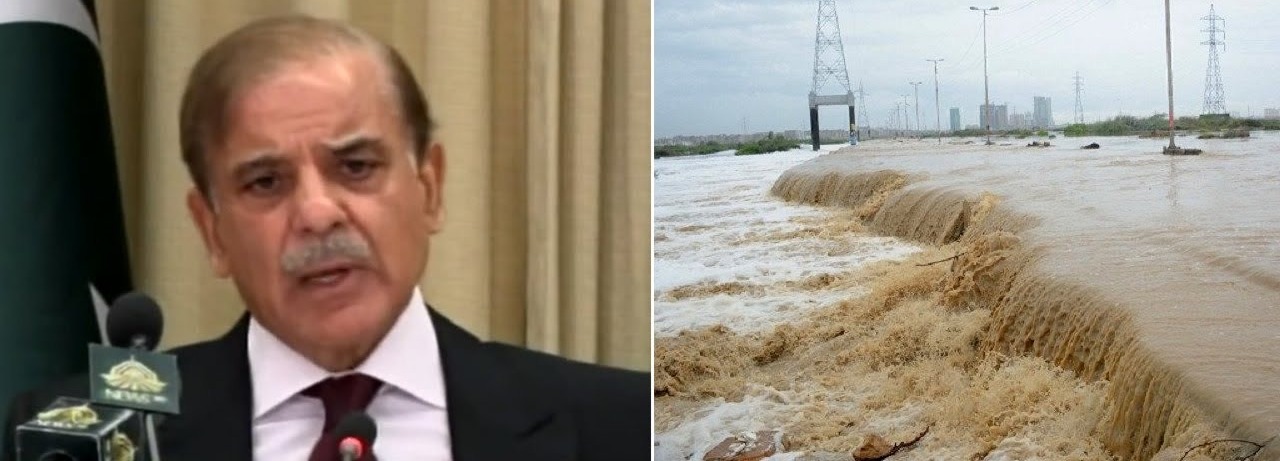
.jpeg)

.jpeg)